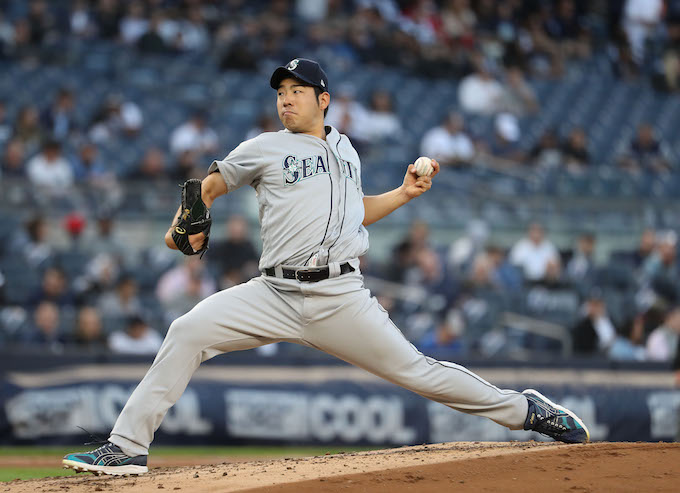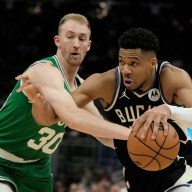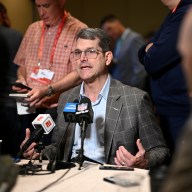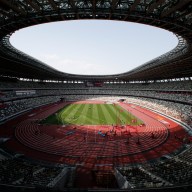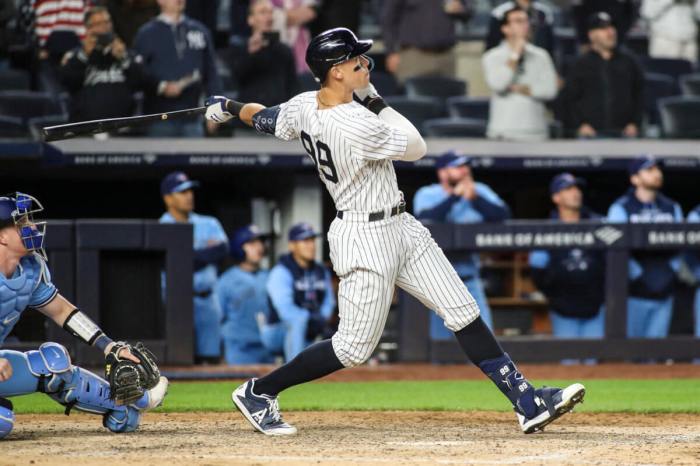Seattle Mariners rookie pitcher Yusei Kikuchi continues to find his footing in Major League Baseball after coming over from Japan this winter.
The 27-year-old left-hander made mincemeat out of the New York Yankees in the Bronx during a 10-1 victory, allowing just one run on three hits in 7.2 innings.
He held New York hitless for 5.1 of those frames as his crafty style of pitching seemed to stymie and befuddle the Yankees throughout the night.
Kikuchi made his name with the Saitama Seibu Lions of the Nippon Professional Baseball’s Pacific League thanks to a hitch-filled delivery that throws the opposing batter’s timing off.
Couple that with his ability to deliver all of his pitches — ranging from a 93-mile-per-hour fastball to a 74-mile-per-hour curveball — with an identical arm angle, and it’s understandable why the Mariners inked him to a three-year, $43 million deal.
On Wednesday night in the Bronx, though, Kikuchi looked as though he brought some added firepower to his pitching arsenal.
Television cameras caught a glimpse of a foreign substance, believed to be pine tar, on the inside of Kikuchi’s hat brim during the eighth inning. The hurler was seen constantly adjusting his hat, submerging his thumb in the brown, glimmering pool atop his brow.
Here’s a video of the pine tar under Kikuchi’s hat. pic.twitter.com/oFgT5700gR
— Andrew (@Andrew_Rotondi) May 9, 2019
Busted. Right?
According to Rule 6.02(c)(4) in Major League Baseball’s rulebook: “The pitcher shall not apply a foreign substance of any kind to the ball. Violation of that rule calls for immediate ejection and a 10-game suspension.
Applying a foreign substance to a baseball, or doctoring it, alters the aerodynamics of a pitch. It gives the pitcher an unfair advantage in that it further deceives the batter’s eye.
During baseball’s earliest days, pitcher’s utilized the spitball to do so until the pitch was outlawed in 1920. Pitchers worked to get around that by bringing in pine tar or using files to scuff the ball.
Scuffing the ball affects the ball’s flight on its way to the batter in that it promotes movement in unnatural, even opposite, directions.
Pine tar and other substances like Vaseline or even shaving cream, allows pitchers to put more spin on the ball, allowing them to either throw faster or induce more movement.
Yankees fans saw this happen to one of their own five years ago when Michael Pineda was busted for having pine tar on his neck at Fenway Park against the Boston Red Sox. He was apprehended, ejected, and suspended.
Word got out to Yankees fans in the bleachers on Wednesday night as they implored umpire Angel Hernandez to check on Kikuchi.
Given today’s technological advancements and the ease of information getting down to the dugout, one would think Yankees manager Aaron Boone would have stepped up and said something.
After all, it was Boone who spotted the pine tar on Pineda’s neck half-a-decade ago when he was working as an analyst for ESPN.
Yet, nothing happened. Kikuchi stayed on until he gave up a single to Mike Tauchman with two outs in the eighth and he was off the hook.
“I was aware of it very late,” Yankees manager Aaron Boone said. “I was made aware of it sometime in the eighth inning there, so I’ll take a look at it and we’ll kind of see what we make of it.”
Either Boone is telling the truth or he’s just pandering to baseball’s well-known secret: Pitchers can doctor a baseball as long as it’s subtle enough.
I’d put my money on the latter, especially given his players’ reactions following the game.
“A lot of guys use stuff,” first baseman Luke Voit said.
“I could care less,” left fielder Cameron Maybin said.
“He had stuff on his hat? That’s not my zone,” catcher Austin Romine said. “I don’t talk about that kind of stuff. There are other people that take care of that.”
It sure seems like this is a pretty common occurrence.
Earlier this year, Mets pitcher Noah Syndergaard was seen rubbing his two fingers on the heel of his glove before rubbing up a baseball against the Phillies. While some called him out, the issue was quickly dropped.
So is the theme throughout baseball history as some of the game’s best have done it.
Whitey Ford had his catcher, Elston Howard, scuff the ball up for him. Gaylord Perry’s autobiography was titled “Me and the Spitter.” Jim Palmer revealed that Don Sutton taught him how to scuff a baseball up.
While Palmer was never accused of doctoring a baseball, all four pitchers are in the Hall of Fame.
And those are just a few instances.
Doctoring pitches will always be Major League Baseball’s dirty little secret that, for some reason, will never be fully policed. Wednesday night at Yankee Stadium further proved that and Boone’s silence on the matter suggests that his pitching staff is just as guilty as the rest of the league.
It makes little sense as to why the league isn’t more vigilant about this matter. As commissioner Rob Manfred continues to look for ways to make the game more appealing to the next generation of fans, taking away a huge advantage “illegally” obtained by pitchers will only result in more offense.
But the league remains archaically mysterious as some cheating — as long as it isn’t completely obvious — seems to be more tolerable than other types.
Delving into steroids though will be another column for another day.

